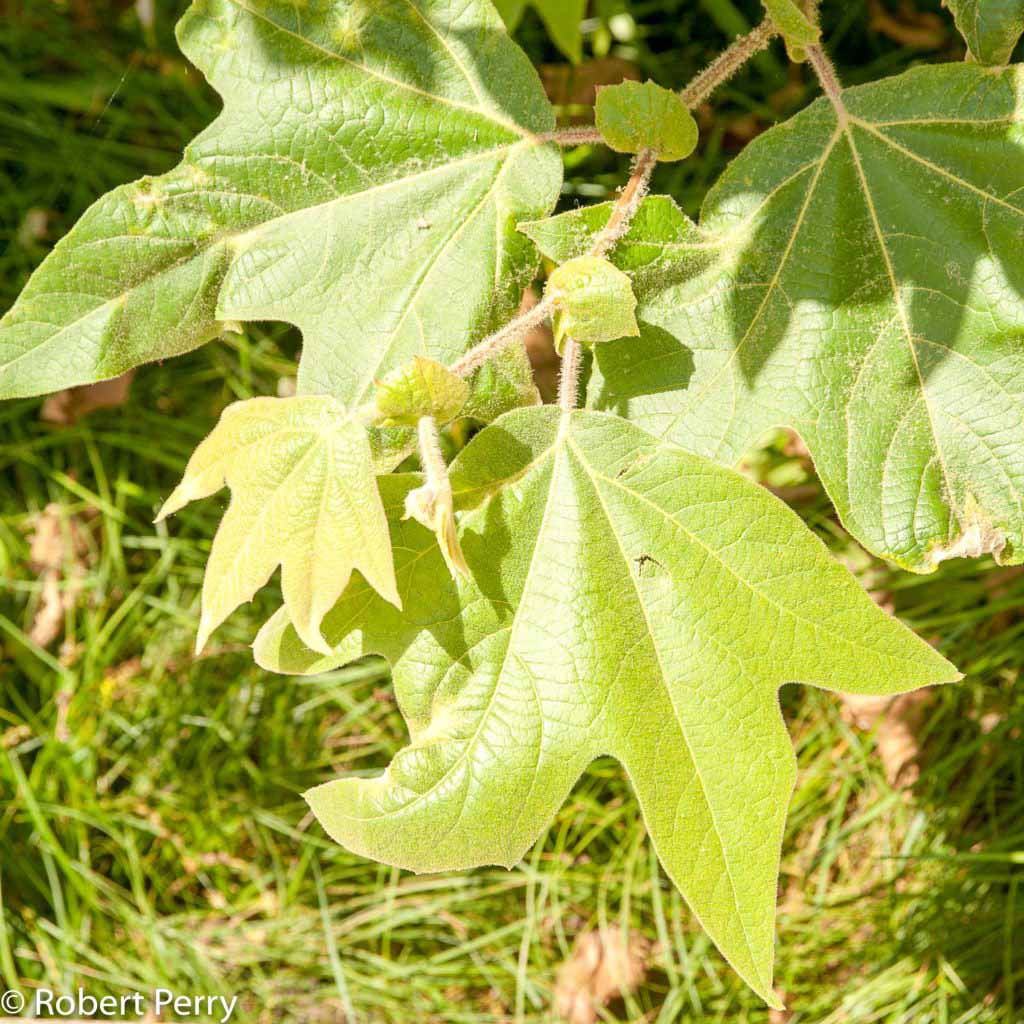A large and majestic tree, the Western sycamore grows with a twisting trunk and branch habit, 40-80 ft. tall, 30-50 ft. wide. Foliage is comprised of large flattened leaves with deeply cut lobes resembling the shape of a hand. Leaves turn pale brown and orange by the end of summer. Bark peels and flakes off to reveal interesting mottled colors of white, tan and cream beneath.
To many people, the Western sycamore is one of the signature species of Inland Empire landscapes and gardens. Young plants grow very quickly; older specimens can attain a unique and sculptural stature. Since the Western sycamore naturally grows in riparian habitats the best growth from this species occurs with regular moisture throughout the year. Prolonged summer heat in combination with extended periods of drought stress causes leaf damage and stem dieback.
Old specimens of Western sycamore are often celebrated as heritage trees due to their size and character. Sometimes several trees are planted together to form a multi-trunk landscape feature. Large specimens of Western sycamore generate large volumes of leaf litter that can completely cover understory plantings.








